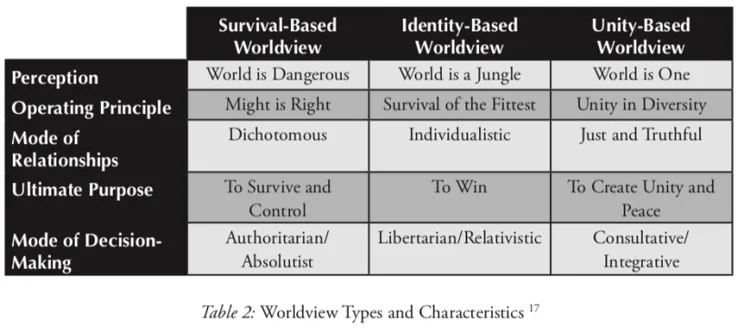THE NAME IS BOND, JAMES BOND.
When you hear/read those words, what image comes to mind; an alpha male or a beta male? My mind goes straight to the epitome of what the ideal man should be according to society.
The perfect, powerful, well-dressed, classy, measured, always more agile and clever than the “lesser/weaker” male. Bond never cries. He’s always in control, always ready to fight or f*%k. His emotions bounce from anger to lust to sex to savagery. This ideal…Bond…is a type of “savior” for mankind, keeping the world (or at least Britain) safe, one fight at a time.
Interestingly, a few months ago I saw Daniel Craig (a.k.a. the current James Bond) being publicly shamed for wearing his newborn baby in a baby carrier when he went out shopping. WTF is that all about people? Really? Really? Really?
No wonder men in our culture are confused as to “how to be a man.” In one breath society says how attractive, heartwarming, and even sexy it is when a man holds and cares for his baby, and in the next breath society states very clearly a “REAL MAN” does not carry his baby around.
In our current society all males are measured against this ideal of the “alpha male.” The problem is, this type of man often exhibits what is currently labeled as “toxic masculinity.” Toxic masculinity is a phrase that is getting tossed around lately so let’s take a moment to try to understand it a bit better.
“The idea that there is only one way to be anything is ridiculous, yet that is exactly what toxic masculinity is; it is the belief that to “be a man” a male has to be aggressive, strong, tough, hypersexual and unfeeling.
And when our softer, gentler boys are unable to live up to this ideal, and struggle to emotionally cope with the constant onslaught of bullying from peers/parents/TV/news/society, they are turning more and more to violence to fill the void within.
The world is in dire need of sensitive men but I’m not sure we as a society even know how to facilitate this change.
“In order for change to happen, I think society needs to get as angry when someone tries to shame a boy for having an emotion that isn’t anger as we do about our girls being sexually harassed.
What if that happened? What would it look like if mothers and fathers started getting mad at anyone who shamed a male for expressing a “feminine/weaker” feeling such as fear, sorrow, or submission; yes, even submission.
I believe that to be a great leader you must, at times, be able to submit to and follow someone else to truly understand the experience of those you lead.
So, how do you raise a kind, gentle, caring man who will be strong enough to cry and kick someone’s ass if needed? And gentle enough to calm his sleeping baby and strong enough to withstand the jokes slung at him from his “mates” at work who make fun of him for being a hands-on parent?
When I take a step back and look at the gestalt, or the macro of society, and then take a look at the micro of each individual human being, I see two things parents can do which could force society to change one little boy at a time. These two concepts parents must know about to help foster this change are the following:
WORLD VIEW
AND
INNER VOICE
It’s my belief that we, as parents, can change the worldview of an entire generation (both genders) by offering them alternative ways to view the world.
By shifting an individual’s worldview their inner voice inevitably changes; these two “ingredients” are of utmost importance in solving the problem of toxic masculinity within our current society.
Society has to stop reinforcing toxic masculinity and until that happens you must be the filter.
WORLDVIEW: WHAT IS IT AND HOW PARENTS CAN HELP SHAPE IT.
“Do you see people as innately good or bad? Do you see the glass as half empty or half full? How you view the world around you is as unique and specific to you as your fingerprint.
This unique lens helps you experience/interpret the world and is called your worldview. Every living human being has a worldview. You may not be aware of it, or even know it exists because you can’t see it, but you have it nonetheless.
In 2007, the International Education for Peace Institute printed a handbook on how to accomplish world peace. They suggested that by shifting the world’s worldview from a Survival-Based/Identity-Based one to a Unity-Based Worldview, humans might have a chance at world peace.
I won’t go into all the details of the differences because this post is about toxic masculinity; however, you can get a pretty good idea about worldview by examining the graph below.

An individual’s worldview is like a pair of contact lenses that you are born with. Each one of us is born with clear lenses. Then slowly, little by little your contact lenses start to change prescription depending on what you are exposed to and how you are taught by parents to respond to things in the world.
Each of our lenses obviously impacts how we perceive/interpret/understand and react to each other and the world around us. Our lenses are forming from the first second we enter the world.
Were you born into a warm and safe environment? Or were you born into a war zone with bombs exploding nearby? Everything factors into how we see the world.
“Why is it important to understand your worldview and what helped shape it? Because, not only do we filter everything we absorb around us through our worldview, we also use it to decide/judge what’s normal/abnormal or acceptable/unacceptable.
This brings me back to the topic of this article which is how we (parents) can change toxic masculinity within society.
How do you change your worldview and teach/offer your child(ren) the ideas of tolerance, understanding, empathy, integrity and hope? How do you change your current worldview to a more Unity-Based Worldview?
Here is my preliminary list:
Steps to take to change your worldview:
- Question how you see the world around you and what factors (over the course of your life) were impactful in this formation and why? Write it down if needed…
- Seek to understand new ways of thinking/seeing the world, which promote unity, togetherness, and those positive traits you seek in yourself and children. An example would be reading a book called The Art of Happiness by the Dalai Lama. Seeing the world through someone else’s lenses often helps us notice a color we haven’t before.
- Share with your children (partner/friends/co-workers etc.) the things you’re learning and how it’s changing you for the better. When we teach others, the information we are sharing builds new neural pathways that strengthen this new worldview/outlook. Sometimes a therapist, life coach, or insightful friend is helpful in this process of discovery.
I am still continually growing and “undoing” my knee-jerk reactions in situations which force me to challenge my worldview.
“For example: I grew up with an Identity-based worldview. I had to win/be the best at everything that I tried my hand at and I was in constant competition with everyone and everything. People didn’t even know that I was competing with them most of the time!
However, in my early 20s (after a few years of college and being away from home) I realized that this type of “win at all costs” mentality was adding a lot of stress to my life. Plus, as I learned more about psychology and humans I began to realize just how much every interaction we have with others impacts our lives. The way forward for me was a Unity-Based worldview.
Just remember, not everyone in your life is going to embrace this new and enlightened you. Just like in chemistry, if one of the elements in a mixture changes, it affects the entire solution.
“Be strong and remember you are making the world better for your children one person at a time.
INNER VOICE:
Imagine that you just walked into a room and forgot what you walked in there for…now pause. What were the words you spoke to yourself when you realized you had forgotten what you were doing? What was the overall gist of what you said? Were the words judgmental, sarcastically funny, supportive, or mean and spiteful?
Those words which popped immediately into your head, without effort, came from what is called your inner voice.
Maybe a phrase your parents often said to you came to mind. That’s because parents are the most influential person in our early formative years.
“Your words are currently shaping your child’s inner voice. What are you putting into their heads? Ideas of tolerance and forgiveness or words of cruel judgement and disapproval?
This image is more effective in explaining how your words impact your child’s inner voice than anything I can write.

Just as we do now, our parent(s) repeated themselves many times in an effort to teach us, keep us safe, and help us “fit in” a specific culture/social group.
It’s normal for your parents to want you to follow and understand the spoken and unspoken rules of the family.
However, here are some harmful “rules” that support the ideals of toxic masculinity:
- Women do the dishes
- Men do the yard work
- Children’s opinions don’t matter on family decisions
- Males don’t wear feminine colors or display feminine/weak emotions
- Females aren’t allowed to get angry or show aggression
Of course we all know these ideas are outdated. So upgrade. You’re the parent now. You make the rules of the house. Remember though, it’s not just about changing the rules, you have to change that inner voice, too.
Instead of saying things like:
“Don’t be a girl and cry. Man up!”
“Look at what you did! How could you spill the milk again, you lazy thing.”
“Why can’t you stop running around and act like a lady?”
“Try to say things like:
“Everybody cries once in awhile, it’s ok.”
“Oh no you spilled the milk again? Go grab some paper towels. Let’s clean this up and talk about why this keeps happening and try to fix it.”
“You sure do have a lot of energy. But right now it’s time to sit down.”
Whatever your family rules were/are I’m pretty sure some of them involve ideas that support toxic masculinity. Identify them and make a conscious effort to try and change them.
Read books/blogs/articles to become more aware of toxic masculinity so you can begin to point it out to yourself and your children.
It amazes me the toxic thoughts that still pop into my mind even after 16 years of continued study and self-exploration once my eyes were opened to the injustices in the world.
“I didn’t realize just how many “isms” were my “norms” from the things I had been exposed to growing up; you know like sexism, racism, ageism, etc. It’s much harder undoing an adult than it is to positively build up a child.
It takes a lot of hard work to rewire your brain but it’s worth it and it’s doable! To start the mental reset for your thoughts you must first:
- Acknowledge the toxic “rule” when you have it/realize it.
- Think about/research facts that dispute this idea.
- Repeat the new information you learned multiple times over multiple days to strengthen the new neural pathway.
“Just like riding a bike or learning a new skill which requires muscle memory, our brains need to be primed with the new positive thoughts to try and override the old ways of thinking.
It could look something like this:
- Your son starts to cry when he doesn’t get his way. Your first thought is “boys don’t cry.” You acknowledge this thought and that it supports toxic ways of relating to boys.
- In those few seconds after your son starts to cry and before you say something that supports toxic ideals, you stop and rethink, and instead say: “I know it doesn’t feel good to not get what you want. Everyone cries sometimes and that’s ok. Just don’t sit in the sorrow too long because you may miss out on something else you didn’t realize was an option.”
- After your son has gotten himself under control and engaged in a new activity, you find quiet times over the next several days to sit him down and talk about the event. Talk about what upset him and talk about how he successfully resolved the situation. Practice coping skills and reaffirm the notion that ALL emotions are OK and felt by everyone. At some point, feel free to bring up the fact that there will come a time when crying in society might not always be the best or appropriate.
This process won’t be easy, especially if you are new to the idea of toxic masculinity and rather see the “symptoms” as simply describing all the men in your life.
It won’t be easy but it will be worth it, and it is necessary for the futures of our boys and girls.
THE WRAP-UP
“The world needs more sensitive men.
I say that sentence to my son at least once a day. I am raising a soft, gentle, kind, thoughtful, and intelligent little man.
He is very aware of the world around him and since he is being raised by two females, neither of whom will EVER say to him “man up,” his inner voice will hopefully be full of positive phrases not laden down with the ideas of toxic masculinity.
“When I see something that is toxic I speak up and explain to my kids how that person’s response wasn’t appropriate/kind.
We talk about what they could have done instead (build those positive pathways) and if appropriate, offer kind words or a helping hand to the recipient of the toxic interaction.
Your child needs you to be their filter in a world that is currently stuck in a “eat or be eaten” mentality.
CHANGE THE WORDS OF THE STORY
AND CHANGE THE ENDING.
““Dialogue launches language, in the mind, but once it is launched we develop a new power, ‘inner speech,’ and it is this that is indispensable for our further development, our thinking. . . . ‘We are our language,’ it is often said; but our real language, our real identity, lies in inner speech, in that ceaseless stream and generation of meaning that constitutes the individual mind. It is through inner speech that the child develops his own concepts and meanings; it is through inner speech that he achieves his own identity; it is through inner speech, finally, that he constructs his own world.”






